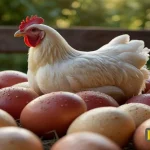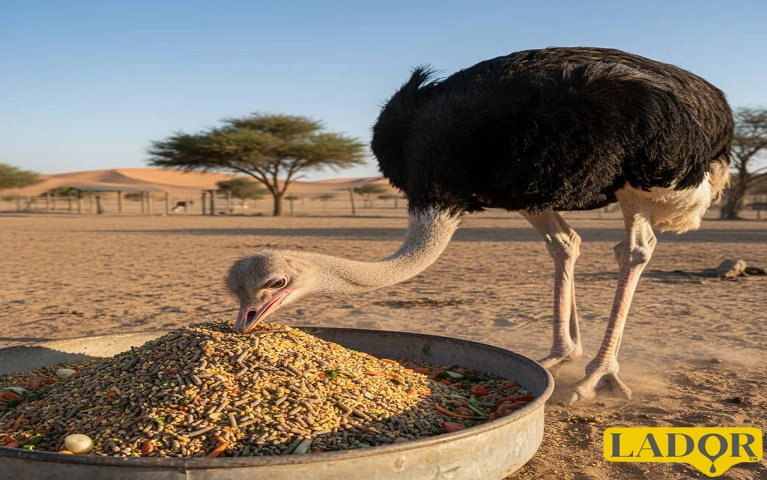

Oil is very important in ostrich nutrition. It is important to note that meeting the nutritional requirements of these birds has a direct impact on their growth, health, meat quality, and overall economic productivity of the flock. Among the various components of the diet, fats and oils serve as concentrated sources of energy and play a crucial role in improving feed efficiency and product quality. Proper use of different oils can not only increase the energy density of the diet but also enhance nutrient absorption, gastrointestinal health, and carcass quality. Follow us in the rest of this article to talk about the role of oils in the ostrich diet.
Ostrich feed is usually a mixture of plant-based and sometimes animal-based ingredients, including corn, wheat, soybean meal, bran, mineral–vitamin supplements, and in some cases, added edible oils. Since ostriches require high energy and moderate protein levels, using fats alongside carbohydrates allows the bird’s energy needs to be met without increasing the overall feed volume.
Oils are a dense source of energy—about 2.5 times higher than carbohydrates—and are highly beneficial in ostrich nutrition. Adding a controlled amount of oil to the diet can offer the following advantages:
Poultry oils are generally divided into two main categories:
These include soybean oil, sunflower oil, corn oil, and canola oil. Such oils are rich in unsaturated fatty acids (especially linoleic and linolenic acids), which contribute to better meat quality and a stronger immune system.
Advantages: High digestibility, improved body fatty acid composition, and a good source of vitamin E.
Disadvantages: Prone to rapid oxidation under heat and light, requiring antioxidants for proper storage.
These include fish oil, beef tallow, mutton fat, and poultry oil. They contain higher levels of saturated fatty acids and are often used in high-energy diets.
Advantages: High thermal stability, rich energy source, and generally more cost-effective than vegetable oils.
Disadvantages: Lower digestibility and possible transfer of undesirable odor or taste to the meat if overused.

Poultry fat is a by-product of the poultry industry, extracted from the fatty tissues of chickens. This oil contains a balanced composition of saturated and unsaturated fatty acids and is considered an economical option for ostrich farmers.

A’la oil Sepahan Company is one of the leading producers of animal and poultry oils in Iran. Using advanced global technologies and precise quality control systems, the company produces various refined oils specifically designed for livestock, poultry, and aquaculture feed. The company’s products comply with national standards, possess high stability and nutritional value, and can play an effective role in improving productivity and the overall health of birds—particularly ostriches.
Overall, the inclusion of oils in the ostrich diet is an effective strategy for increasing energy levels, improving feed quality, and enhancing bird performance. The choice of oil should be based on fatty acid composition, digestibility, cost, and storage conditions. Both vegetable oils—due to their high nutritional value—and animal oils, especially poultry fat—due to their cost-effectiveness—hold a significant place in industrial ostrich nutrition.
A’la oil Sepahan Company, operating under the brand name Lador, is a reputable manufacturer of various animal and industrial oils such as fish oil, tallow oil, palm fat powder, calcium-fat powder with omega-3, fat powder, tallow fatty acid, and raw materials for animal feed including turkey feed, quail feed, and more. For consultation and price inquiries, you can contact the experts at Ladorfat.
Using standardized products from companies such as A’la oil Sepahan ensures optimal quality, stability, and efficiency in ostrich feed formulations.